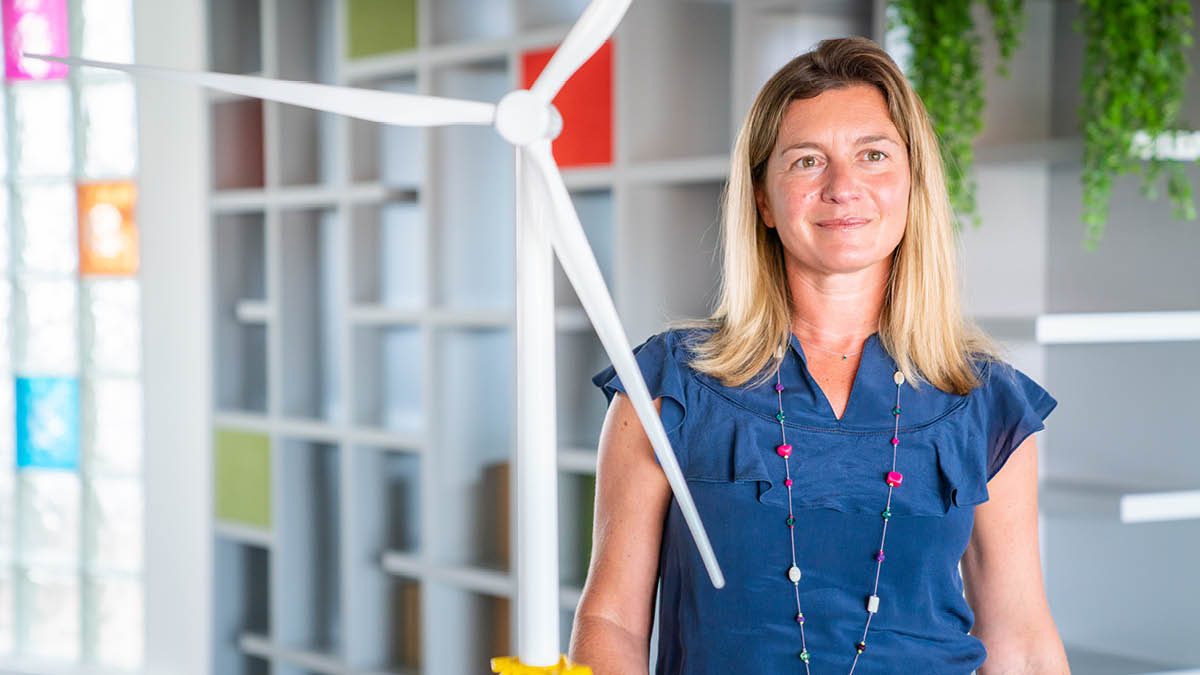Séverine Baudic, managing director of SBM Offshore’s new energies and services division, explains how we can develop sustainable and affordable energy for generations to come
Promoted by SBM Offshore

SBM Offshore is optimistic that down in the sparkling seas of Southern France it is working on technology primed to accelerate the global energy transition. The Dutch-based group is currently piloting new floating offshore wind solutions in waters near Marseille and is set to launch fabrication of a wave energy prototype to be deployed offshore Monaco in the future.
“Since Covid and the Russia-Ukraine war, we have seen a stronger drive from governments to accelerate energy transition to renewables,” says Séverine Baudic, managing director of SBM Offshore’s new energies and services division. “This is only going to increase and one of the keys to getting it right is to be able to provide this energy at an affordable cost. That is something we and other innovative firms are aiming towards.”
SBM Offshore is most commonly associated with serving oil and gas energy giants such as Exxon Mobil with its 15-strong fleet of floating production, storage and offloading vessels (FPSOs). It currently has five FPSOs under construction and it remains the company’s main revenue generator.
For around a decade, the company has strived to utilise its offshore technological experience in the renewable energy market. The main area of focus is floating offshore wind – essentially an offshore wind turbine erected on a floating structure. It is ideal technology for areas off a coast or further out to sea where fixed offshore wind platforms are not tenable because of depth or weather impact. “At the time there really wasn’t a floating wind market at all but we believed we could use our existing knowledge of the tension leg platform (TLP) technology as a solution,” explains Baudic.
We are an energy transition company. We see the future of energy centred on decarbonising fossil fuel energy and developing renewable solutions
In 2016, SBM Offshore was selected by French energy group EDF to work on the pilot Provence Grand Large floating offshore wind project 17km offshore Marseille. SBM Offshore designed three offshore wind floaters – vertically moored with low motion – based on a TLP design, which will each hold 8.4MW Siemens turbines. It is now assembling the floaters which are expected to be operational in the water by the end of next year.
SBM Offshore has also designed a second-generation floater called Float4Wind which is suitable for ultradeep water of 2,000 metres, harsher conditions and the world’s biggest turbines. It can also be fabricated and assembled more quickly. The design is simpler and ready for industrialisation, with the aim to be cost competitive.
“The floating wind market is now real, with two competitor technologies already in the water,” says Baudic. “But we, and the other up to 80 different floater concepts in this industry, need to prove first that the technology works.”
SBM Offshore is confidently targeting over two gigawatt of installed or under construction floating wind capacity by 2030. “And looking at our potential clients, they are not just renewable utility companies; we see more oil and gas players investing in the energy transition. That is making a difference to the size of the overall market and our business as they recognise our experience,” Baudic explains.
The company is eyeing up opportunities in key markets such as France, West Coast USA, the UK, South Korea and Japan to drive its growth. “In these markets, the only solution is floating wind,” Baudic says. “We are already working on other future test and demonstration projects including in the Celtic Sea.”
It is not just a solution for the environment but also for the economy and local jobs, with assembly of floating wind components taking place in factories and harbours close to project sites. However, despite these benefits, Baudic believes project development is still too lengthy, not helped by permitting delays. The recent rise in inflation is also hiking supply chain costs such as steel. It means that the search for alternative renewable solutions needs to continue, for instance wave energy. “We want to harness the power of the ocean,” she says. “There is no wave energy market at the moment, but the long-term potential is huge.”
Given the timescale and nascent nature of both floating wind and wave energy, SBM Offshore is realistic that energy transition will take time. With the recent hike in oil prices and governments realising that fossil fuels can play a crucial role in reducing dependence on Russian energy, there is still life left in SBM’s traditional oil and gas division. But it must continue to change.
To help the oil and gas sector take green steps SBM Offshore has an emissionZERO programme reducing emissions from FPSOs. Baudic explains: “We are an energy transition company. We see the future of energy centred on decarbonising fossil fuel energy and developing renewable solutions.”
To find out more, visit sbmoffshore.com
Promoted by SBM Offshore
Séverine Baudic, managing director of SBM Offshore’s new energies and services division, explains how we can develop sustainable and affordable energy for generations to come
Promoted by SBM Offshore

